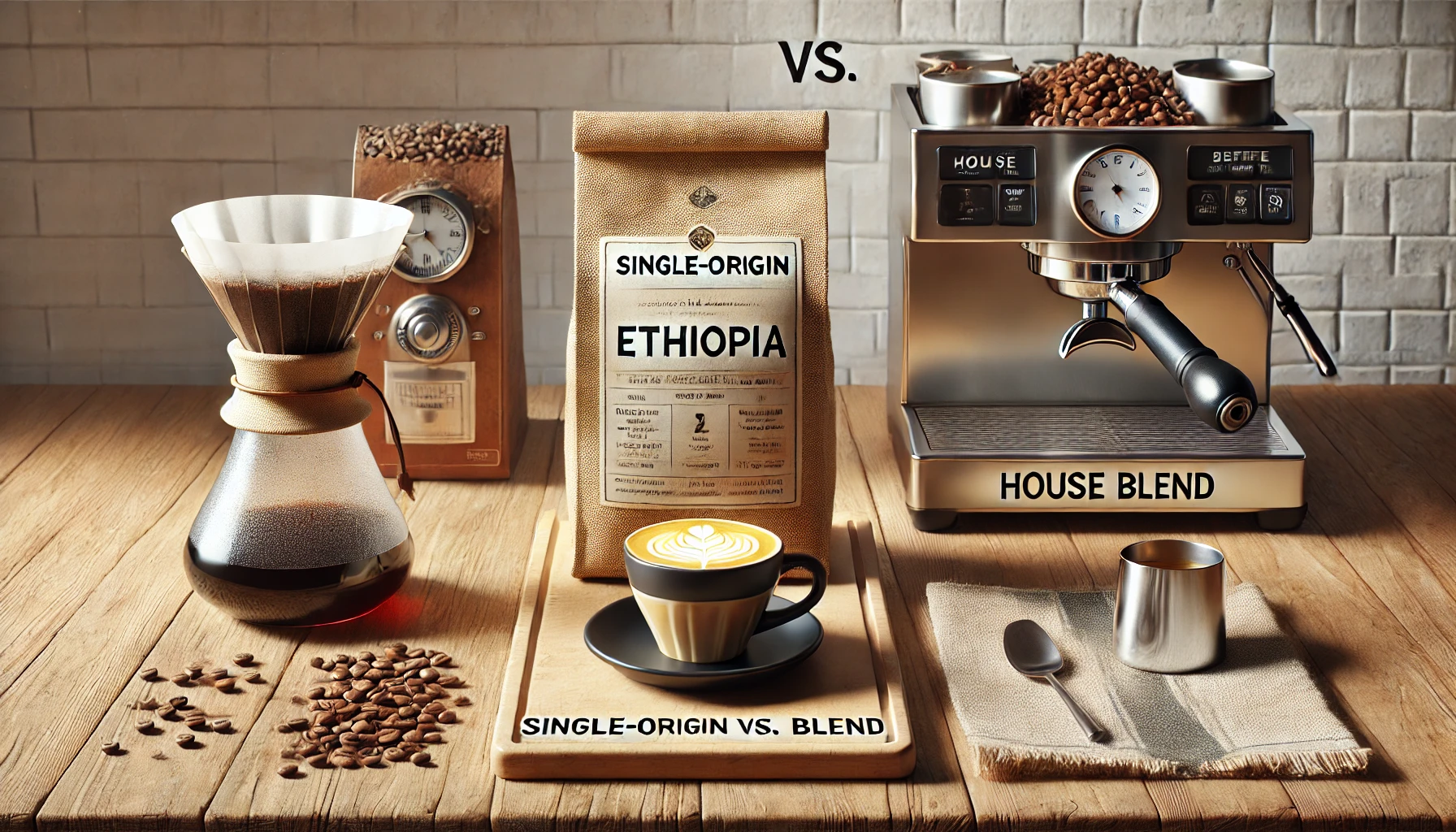When shopping for coffee beans, you’ve probably come across the terms “single-origin” and “blend.” These labels can seem confusing if you’re not familiar with what they mean—but they’re actually a great way to understand the kind of coffee experience you’re about to have.
In this article, we’ll break down the key differences between single-origin coffees and blends, explore their pros and cons, and help you decide which is best suited to your taste, brewing method, and goals as a coffee drinker.
What Is Single-Origin Coffee?
Single-origin coffee comes from one specific place—sometimes as specific as a single farm, region, or cooperative within a country. These coffees highlight the unique flavor profile of their growing environment, also known as terroir.
Examples:
- Ethiopia Yirgacheffe
- Colombia Huila
- Kenya AA
- Panama Geisha from Hacienda La Esmeralda
Key Characteristics:
- Distinctive flavors based on soil, altitude, and climate
- Seasonal availability, harvested at specific times of year
- Often roasted to highlight complexity and nuance
- Typically used in specialty coffee and manual brewing methods
Single-origin coffees are like fine wine—each one tells a story of place, climate, and craft.
What Is a Coffee Blend?
A blend is a combination of two or more different coffees—often from different countries, regions, or even roast levels—designed to create a consistent, balanced flavor profile.
Blends are often used in cafés to ensure that your espresso or latte tastes the same every day, even if bean availability changes seasonally.
Examples:
- Espresso blends (e.g. 80% Arabica, 20% Robusta)
- House blends
- Breakfast blends
- Seasonal blends with specific flavor goals
Key Characteristics:
- Balanced and smooth—blends aim for harmony
- Designed for versatility, especially with milk
- Available year-round
- Can mask defects or enhance strengths of certain beans
Blends are like a well-composed song—each part works together to create a complete, enjoyable experience.
Flavor Differences
Single-Origin:
- Flavor notes can be vivid, unique, and bright
- Great for exploring fruity, floral, or complex tastes
- Can be unpredictable or polarizing depending on your palate
Blends:
- Flavor tends to be rounder, more consistent
- Balanced acidity and sweetness
- Designed to be approachable and crowd-pleasing
Which One Tastes Better?
It depends on your preferences.
If you love to explore, enjoy black coffee, and want to taste specific fruit, floral, or spice notes, single-origin coffee will excite your palate.
If you prefer coffee with body, smoothness, or if you add milk or sugar, blends may give you a better, more balanced cup.
When to Choose Single-Origin Coffee
- You want to explore coffee regions and flavors
- You drink your coffee black or with minimal additions
- You enjoy pour-over, AeroPress, Chemex, or cupping
- You’re interested in the origin story behind each cup
Single-origin coffee is great for those who appreciate variety and depth—and don’t mind a little inconsistency from batch to batch.
When to Choose a Blend
- You prefer consistency and reliability
- You drink espresso or milk-based drinks (like lattes and cappuccinos)
- You want a coffee that’s forgiving and easy to brew
- You’re serving multiple people with different preferences
Blends are perfect for home espresso machines, drip brewers, and busy mornings when you want your coffee to just taste great—no surprises.
Cost Comparison
- Single-origin coffees are often more expensive, due to limited supply, traceability, and high-quality processing.
- Blends are usually more affordable and widely available, especially in grocery stores and cafés.
If you’re building a daily routine, blends offer great value. If you’re indulging in a weekend brew session, single-origin might be worth the splurge.
Roast Level Considerations
- Single-origin beans are often roasted light to medium to highlight the origin’s flavor
- Blends are more commonly medium to dark, which enhances body and consistency, especially for espresso
Of course, there are exceptions—some roasters now offer single-origin espresso or light-roasted blends.
Final Thoughts: Choose Based on Your Coffee Journey
There’s no wrong choice between single-origin and blends—only what fits your taste, your moment, and your mood.
- Want to explore something new? Go for a single-origin.
- Need a reliable everyday brew? Reach for a blend.
- Hosting guests with different tastes? Blends win.
- Want to impress a coffee-loving friend? Try a rare single-origin.
Understanding the difference helps you become a more informed, empowered coffee drinker—and brings you closer to the full richness of what coffee can be.
